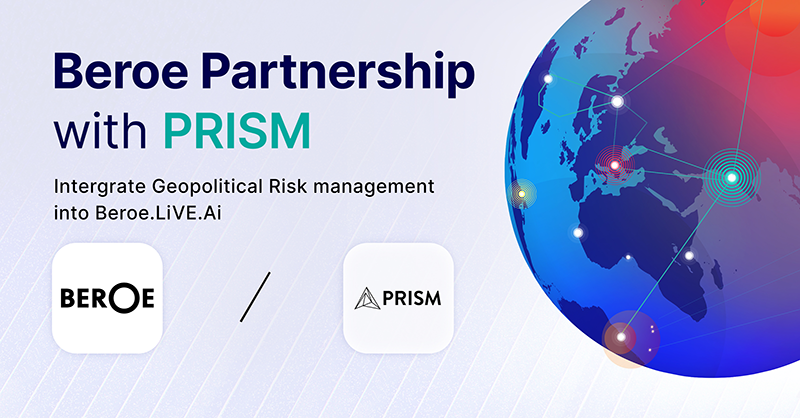Global Soybean Demand Currently Estimated to be 355 Million MT, Says Beroe Inc
Source: PR Newswire
RALEIGH, North Carolina, October 3, 2019 - The current global supply for soybean is 356 MMT and is growing at a CAGR of 3.1 percent, while the demand for soybean is growing at a CAGR of 3.4 percent, according to Beroe Inc, a procurement intelligence firm. An increase in income levels and consolidated supply are expected to support 20–30 percent growth in the soybean and its derivatives trade in the next 10 years.
The major soybean-producing regions are the US, Brazil, and Argentina, which account for 82 percent of the global soybean production. Top soybean consumers are China for 30 percent, the US for 18 percent, Argentina for 14 percent and Brazil for 13 percent. Brazil and the US are the largest soybean exporting countries, responsible for almost 85 percent of global exports, while China is the largest importer of soybean. However, an increase in domestic soybean production is expected to reduce the Chinese import demand in international markets in the upcoming years.
https://www.beroeinc.com/category-intelligence/soybean-market/
Beroe, which is based in North Carolina, further stated that procurement experts can access this report on its recently launched market intelligence platform Beroe LiVE: live.beroeinc.com
The main end-user segments driving the demand for soybean are soy meal and soy oil, obtained by crushing soybean, followed by uses of soybean for food and animal feed. Demand from the crushing industry and growing mandates for using bio-fuel are further driving the growth of the soybean market. A decrease in Chinese imports and impending La Nina weather conditions are expected to pose a challenge to the global soybean market.
Soybean traders and farmers are the major suppliers with the key trading houses buying soybean directly from aggregators and their farmers’ network. After nearly a decade of development, new soybeans have been adapted with the high-yielding germplasm providing growers with outstanding performance in their efforts to produce the best crop possible. In addition, the new soybeans tolerate both glyphosate and dicamba herbicides. New engineering systems enable soybean breeders to better analyze soybean genetics, helping create better high-yielding soybean.
Key Findings:
- Both the buyers’ and the sellers’ power to influence the prices in the soybean market is primarily based on supply fundamentals.
- Large buyers, such as crushing mills typically procure soybean in three months contracts while the feed and food industry buyers are small scale buyers and usually prefer medium to long-term contracts.
- Based on the seasonality of soybean, the prices of soybeans are expected to witness the lowest levels during the months of October, November, and December in the crop-year. The soybean prices are the lowest high arrivals of soybeans crops during these months
- Although the prices of soybean are the lowest in Argentina (this is due to currency devaluation), there are a lot of political uncertainties in the country, which limits the sourcing preferences.
- El Nino will cause heavy rainfall in the US and South American regions while the APAC will experience drought or below normal rainfall. The major soybean-producing regions of the US and South America are set to benefit from the El Nino weather condition
The research methodology adopted for the report included:
- Experts with twenty years of domain experience
- Interaction with buyers
- Inputs from supply chain partners
Soybean prices and contract structures are majorly fixed by the suppliers using CBOT futures. The basis and freight costs are added to the CBOT prices based on the destination. Usually, the basis is calculated as the difference between cash and futures prices. The planting and harvesting of soybean influences the price trend cycles as the profit margins depend on the time of buying and selling, which is driven by the supply scenario of the given crop-year.
The report also includes:
Market Analysis:
- Global Market Outlook
- Current Market Size
- Demand–Supply Trends and Frecast
- Key End-use Industries
- Trade Dynamics
- Regional Market Outlook (US, Europe, and Asia)
- Current Market Size
- Demand–Supply Trends and Frecast
- Key End-use Industries (where applicable)
- Trade Dynamics
Industry Analysis:
- Industry Outlook (US, Europe, and Asia)
- Drivers and Cnstraints for the Industry
- Mergers & Acquisitins
- Innvations
- Prter’s Five Forces Analysis
Cost and Pricing Analysis:
- Cost & Price Analysis (US, Europe, and Asia)
- Cst Structure Analysis
- Cst Drivers for Soybean
- Price Frecast for Soybean
Industry Best Practices:
- Key Sourcing Parameters
- Contract Structures
About Beroe Inc.:
Beroe is the world's leading provider of procurement intelligence and supplier compliance solutions. We provide critical market information and analysis that enables companies to make smart sourcing decisions—leading to lower costs, greater profits and reduced risk. Beroe has been providing these services for more than 13 years and currently works with more than 10,000 companies worldwide, including 400 of the Fortune 500 companies.
To learn more about Beroe Inc., please visit: http://www.beroeinc.com
Media Contact:
Rob McMurtrie
rob.mcmurtrie@beroe-inc.com
Related News
View all
Beroe Makes Strategic Investment in Forestreet, Strengthening AI Capabilities and Driving Procurement Intelligence Innovation

Beroe introduces on-demand geopolitical risk analysis through PRISM enabling C-Suite to protect against ongoing supply chain disruptions
